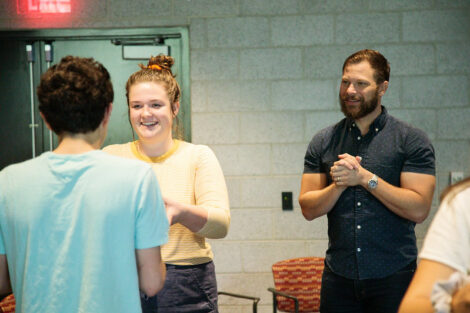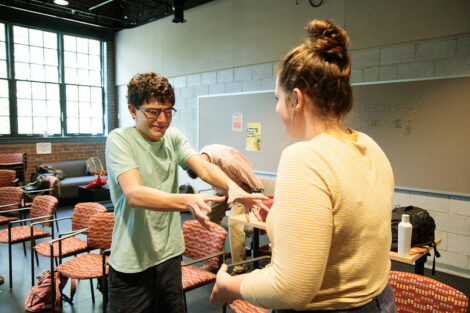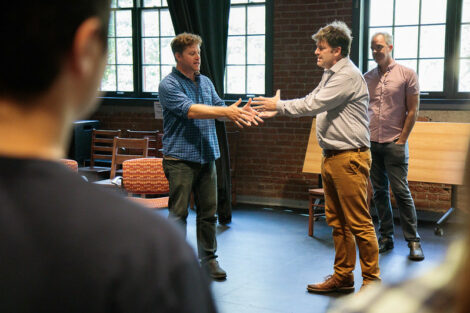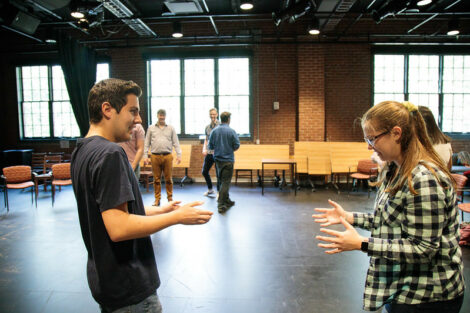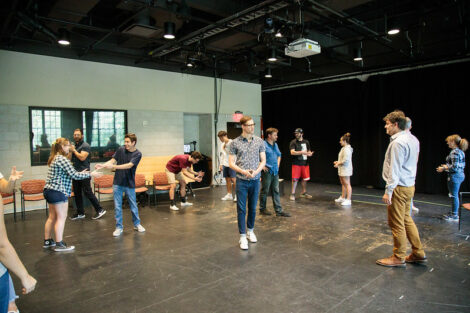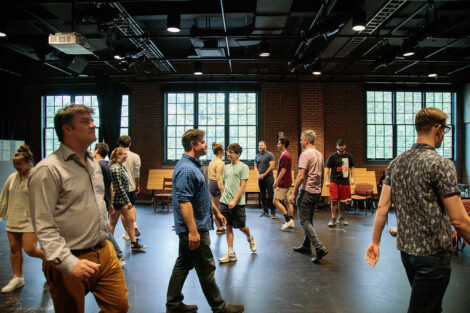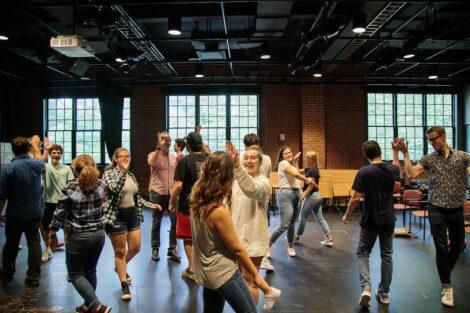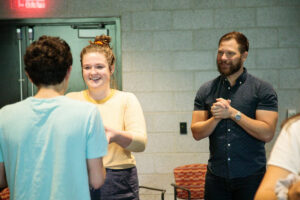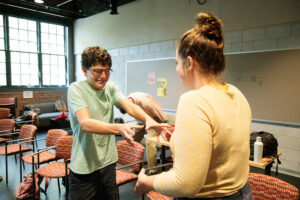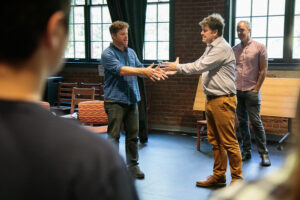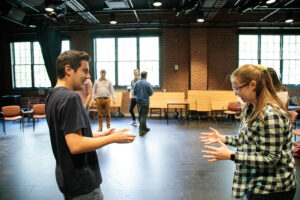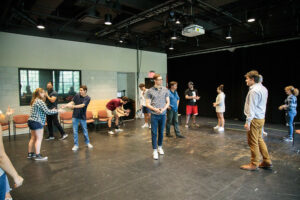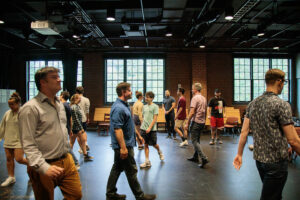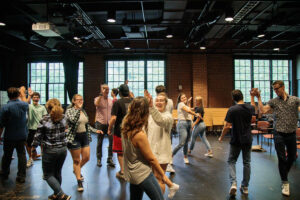Improvised Shakespeare Company helps students learn to be Elizabethan funny
Story by Stephen Wilson, photos by Clay Wegrzynowicz; view the full set of images in Flickr
When the audience at Williams Center for the Arts was asked for a title, a clamoring cacophony of cries came from the crowd. What Blaine Swen, creator and director of The Improvised Shakespeare Company heard was “The Trial of Judge Judy.”
The lights dim, a spotlight rises, and company member Ross Bryant dramatically takes center stage to deliver a dramatic prologue … that searches dramatically for end rhymes for Judy. And thus the drama begins.
The next 90 minutes is a tale told by a cast of brilliant improvisers, full of sound and fury … and revenge plots, untimely murder, duped underlings, traveling French singers, Odyssey references, and, of course, Judge Judy.
It, ultimately, signifies nothing. The story is unrehearsed, unplotted, and unrecorded—lost forever except in the memory of those in attendance, those lucky enough to laugh through the labyrinth to a seemingly logical conclusion.
The language and tropes are all Shakespeare. It’s not done at his expense but rather with reverence and regard.
How do they do it?
The day before the show the company steps into class where Michael O’Neill, associate professor of theater, introduces it and outlines the day: Learn how to improvise and how to do it with Shakespearean style.
Over the residency, the troupe will visit several classes that do the same thing. Like many improv lessons, it begins with an imaginary box passed between partners. With each pass, the partners add a new detail describing the box.
The goal, as Swen says, “is to agree to the idea, support it, and add more, so you can create something together.”
Whether the students are standing in a line and answering questions one word at a time or telling stories one sentence at a time, they are learning to listen carefully, tracking the shifts in energy, and building on ideas.
“Remember, the first idea is the best idea,” says Swen. “Be generous, not laborious, and say goodbye to preconceived notions.”
After a handful of improv exercises, the company then demonstrates how to layer in Shakespeare by running an improv scene in current English and then the same scene in Shakespearean English.
They ask students for the language differences. Not to give away the secret, but the central conceits include elevated language, altering the sentence structure, making comparisons, adding descriptions, thinking about suffixes, using thee and thou, and raising the emotional stakes.
Soon the students sound more Elizabethan and funnier than they did an hour ago.
Case dismissed.
